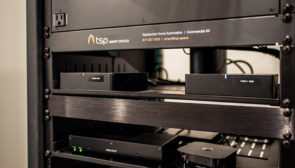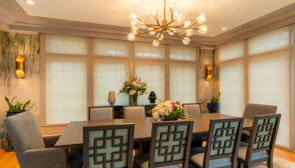Home Theater vs. Media Room – What’s the Difference?
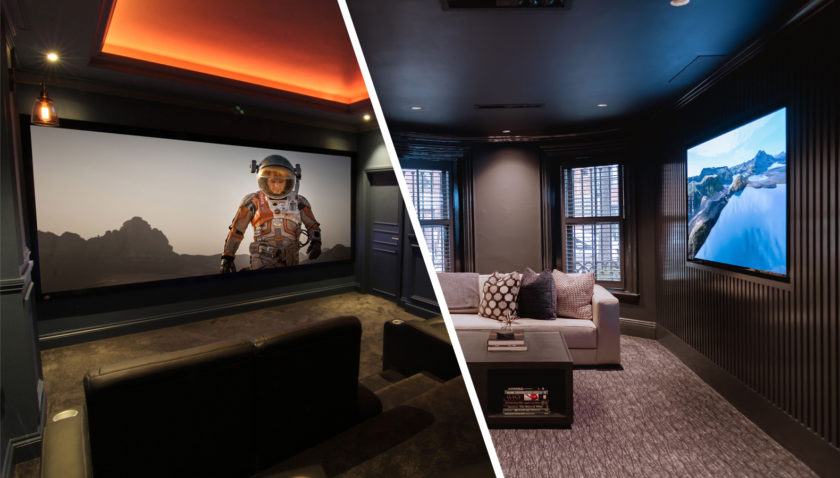
Nomenclature is a challenge when it comes to home technology. We struggle with terms that resonate with homeowners. The “AV guy”, systems integrators, custom installers, technology designers, and low-voltage contractors. The home technology industry seems to have an identity crisis, even though all those terms mean essentially the same thing to an insider. The same goes for the terms that we use to define rooms in the home, which brings us to the topic of the day: What is the difference between a media room and a home theater?
You often hear homeowners referring to their dedicated home theater space as a media room and vice versa. For the build and design community, however, these distinctions can be important in defining your vision and communicating with each other. So, it’s good to know the difference between the two.
Thoughts behind a home theater
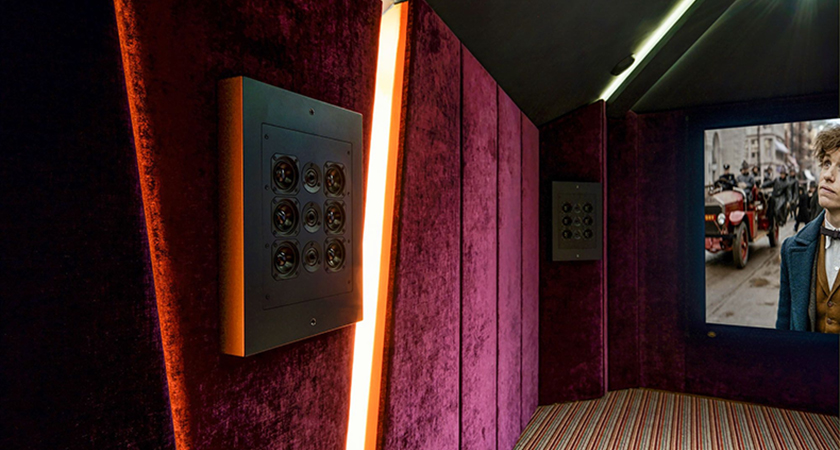
The Home Technology Association (HTA) defines a home theater as a space that is optimized for a theatrical experience. This means a controlled environment that delivers the best entertainment experience possible. But what is so unique about a dedicated home theater space?
You need the ability to control (or completely eliminate) ambient light, for one. Many home theaters are designed without windows or have blackout shades to eliminate outside light sources. The absence of unwanted light creates a better onscreen image.
Image size
Because you have the ability to completely control your environment in a dedicated theater space, you have more options when it comes to image size. Larger screens and video projectors are available to you because they perform well in light-controlled environments. Because homeowners are more apt to allow a large portion of their wall space to be taken up by a projection screen if it isn’t a multi-use space.
Acoustic treatments
Home theaters are also often acoustically-treated for sound control. Home theaters are designed to optimize sound quality inside the theater, while also keeping outside noise at bay. This means special sound isolation design, acoustic treatments, and special construction techniques. Because the room is optimized for sound quality, surround sound is more palatable with speakers hidden behind acoustic treatments or displayed prominently without getting in the way of the room’s other functions. After all, you would not put seven floorstanding speakers and massive subwoofers in a great room/kitchen area. That is why dedicated home theaters exist! And the audio experience is one-of-a-kind and more immersive than can be obtained from a media room.
Seating
Seating is also optimized for viewing. Theater seats are designed to be comfortable for long periods of time, like a binge-watching session or movie marathon. They are oftentimes built on risers to provide ideal viewing angles and unobstructed views from any seat in the room. Equipment is either displayed front and center in a home theater, or relegated to an equipment room or rack elsewhere in the home.
For all these reasons, a home theater is often retrofitted in an enclosed ‘bonus’-type space, such as a basement, a garage, or a spare bedroom, or designed into a floorplan in a home’s early design stage. The end result of a dedicated home theater space is an amazing, exacting experience designed purely for entertainment.
Makings of a media room
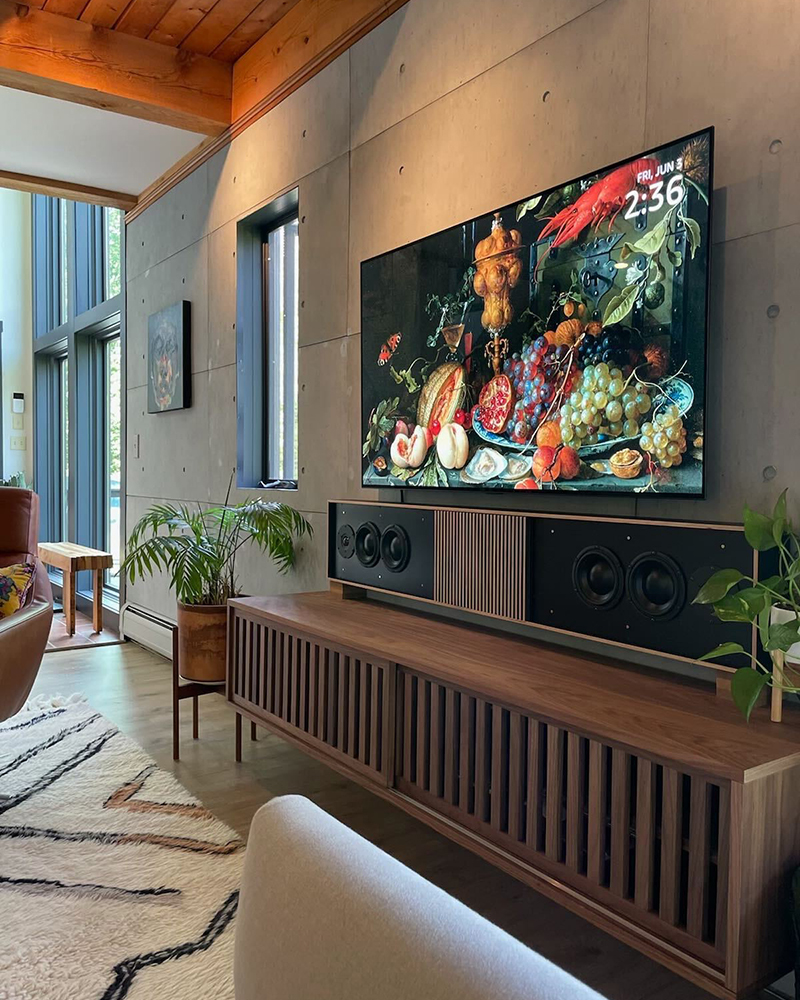
What the home technology professional traditionally calls a media room is not necessarily optimized for the ultimate audio video experience, though it can be to an extent. Here, ambient light is less of a concern. Windows are welcomed and therefore you will not find as many separate video projector / projection screen systems in a media room. However, most technology designers have automated shades in their repertoires (check out our article on Automatic Window Treaments).
You typically will not find acoustic treatments or sound isolation in a media room. Though these days there are some very beautiful acoustic treatments that can hang like artwork in any space. Audio systems are usually smaller surround systems (the TDG Skybar system has been popular in our projects lately) or soundbars that go under the TV and can project the illusion of surround sound to a certain degree.
In the media room, regimented theater seating gives way to relaxed seating arrangements that are friendly for multiple uses such as entertaining guests, relaxing with family, or watching a football game.
Adaptability
For all these reasons, media rooms are often multipurpose and are more adaptable, and can therefore be installed in virtually any space-whether it’s the living area, a great room, a game room, or an open floor plan of some sort. Check out this media room we built in a garage that doubles as a golf simulator!
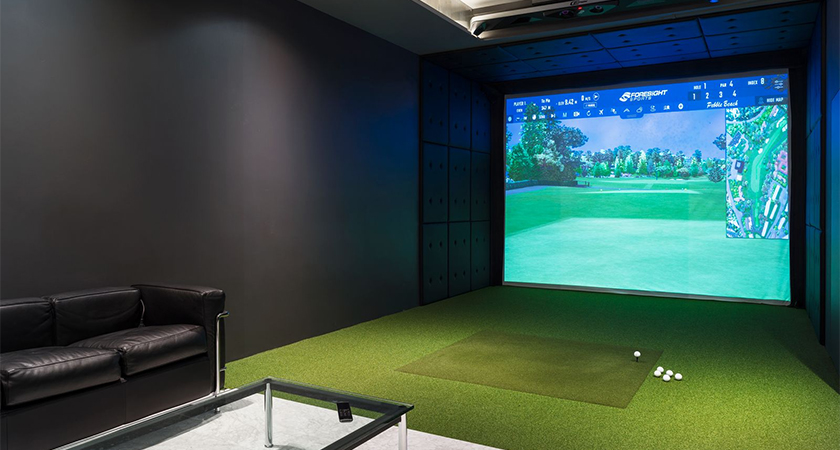
In the process of designing or planning your media room or home theater? Now is the time to engage with a home technology integrator! The earlier you bring in the professionals, the easier it will be to integrate technology seamlessly. Not sure whether a media room or home theater is best for your home? Contact us and we’d be happy to discuss it further with you!
Further reading: The 3 Key Elements of a Home Theater System
